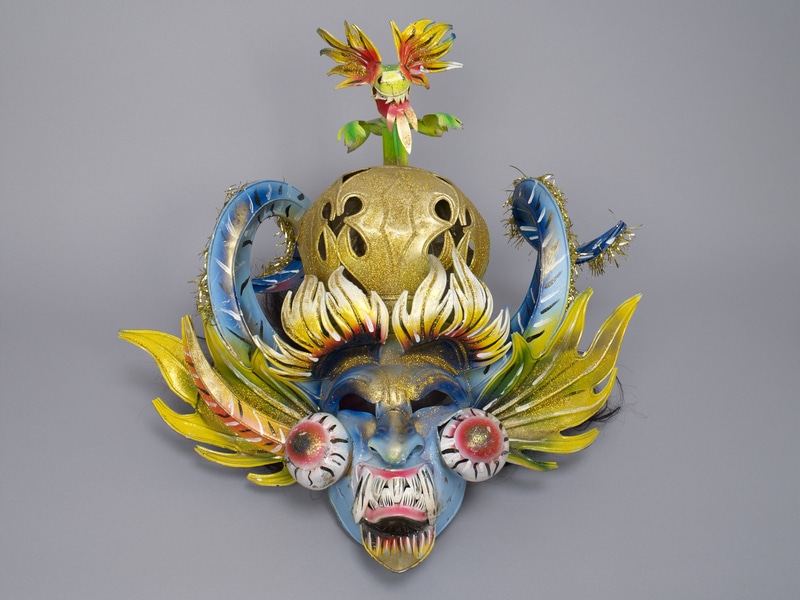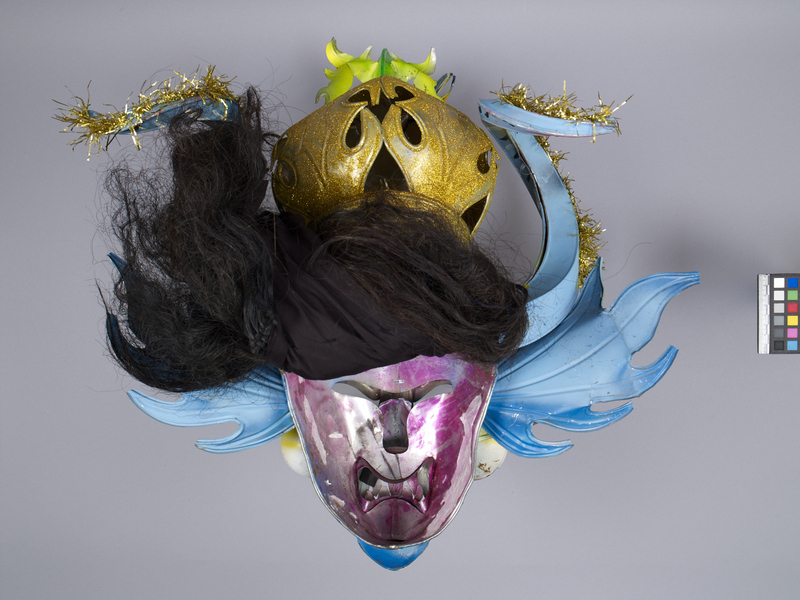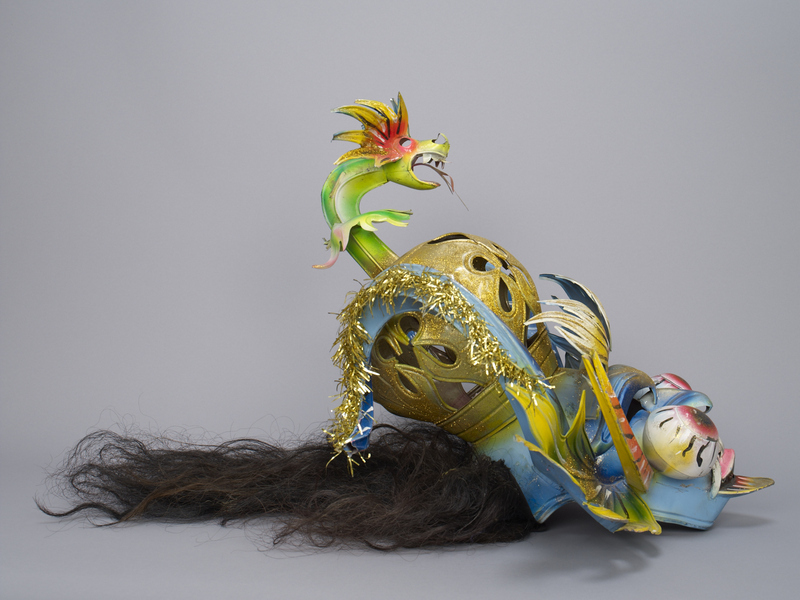Devil King Mask Item Number: 2946/15 from the MOA: University of British Columbia



Description
Large blue devil mask with curling horns, domed crown and multi-coloured dragon at the top. The bulging eyes are pink and topped with thick, furrowed eyebrows. There is a flame like projection above each of the eyebrows which fades from yellow to white. The mouth is curled in a snarl. The top and bottom rows of pointed white teeth are framed on either side by a large fang. The mask’s two flame-shaped ears fade from dark green to yellow at the edges. Two tall blue horns curl backwards from the face. The front ridges of the horns are decorated with golden tinsel. There is a short curved orange horn on one side of the face. The crown is gold, with a high dome and curvilinear cut-outs around the middle. At the top of the crown is a green, winged dragon with pink, flame-like ears. It has short fangs and a three-pronged tongue. The mask and crown are decorated with fine golden glitter. Coarse, black hair has been attached to the back of the mask.
History Of Use
Supay mask; used in the diablada dance performances, during the Virgin of Candelaria feast days. For the people of the Andes, metals were considered "like the harvests, products of the earth", and to extract them, in the colonial period and today, a prospective miner or speculator must be prepared to make a contract with their proprietor. There were various proprietors throughout the centuries, with Supay, also identified as Apo Parato, appearing around 1650. Miners made offerings of chicha, feathers, and diminutive wax effigies for Supay; they hoped for clothes, silver, and food in return. In many of his depictions, Supay has a large erect phallus and can return a miner's lost virility. He has an intimidating and belittling attitude to his supplicants, and the minerals hidden in his cavernous world are often though to be false riches. He is associated with the remaking of the world after the Spanish invasion; also associated with sickness and death.
Item History
- Made by Elber Nahuincha (Maker) in Puno, Puno, Peru during 2008
- Collected by Anthony A. Shelton during February 2012
- Owned by Anthony A. Shelton before March 12, 2012
- Received from Anthony A. Shelton (Seller) and Museum of Anthropology Exhibitions Budget (Funding source) on March 12, 2012
What
Who
- Culture
- Peruvian
- Creator
- Elber Nahuincha (Maker)
- Field Collector
- Anthony A. Shelton
- Previous Owner
- Anthony A. Shelton
- Received from
- Anthony A. Shelton (Seller) and Museum of Anthropology Exhibitions Budget (Funding source)
Where
- Holding Institution
- MOA: University of British Columbia
- Made in
- Puno, Puno, Peru
When
- Creation Date
- during 2008
- Collection Date
- during February 2012
- Ownership Date
- before March 12, 2012
- Acquisition Date
- on March 12, 2012
Other
- Item Classes
- metalwork
- Condition
- fair
- Current Location
- Case 90
- Accession Number
- 2946/0015